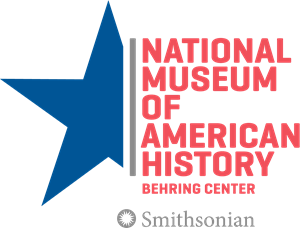Smithsonian’s Annual Youth Summit Connects Students Across the Country for Discussions on Social Justice
The Smithsonian’s National Museum of American History will host its annual National Youth Summit the week of Sept. 21–25 along with providing a set of pre-packaged digital learning materials centered on the topics of social justice. Designed for middle and high school students across the country, this year’s topic will allow youth to examine the impact of teen resistance to systemic racism.
The live event is scheduled Sept. 22 at 3 p.m. EDT and teachers may register their classroom’s for the webcast and to access free supplementary education materials for all ages at http://americanhistory.si.edu/nys. Teachers may facilitate their own “youth summits” anytime during the week of Sept. 21–25, using learning resources and videos provided free to all registered educators.
The summit will provide historic context for the actions of 15-year-old Claudette Colvin, a Black student in Montgomery, Alabama, in 1955, who refused to give up her seat on a segregated bus and later testified in the legal case that ended segregated busing in her hometown. Digital platforms and facilitators will be provided for students to convene in a discussion about this history and to examine the power of today’s teens.
“Our goal is to bring Colvin’s story to life so that middle and high school students across the country can see not only how one teen’s civic actions made a difference, and so that they can discuss the parallels and connections to the teen civic engagement and activism we are seeing today,” said Carrie Kotcho, the museum’s acting associate director for audience engagement. “The museum’s annual Youth Summit provides a platform for students to critically and honestly examine how power, privilege and age have intersected to shape important events in America’s past that give relevance to the nation’s present and future.”
The live National Youth Summit will feature three talks and discussions with scholars, historians and activists throughout the day. Beginning with an introduction by Anthea M. Hartig, the Elizabeth MacMillan Director of the National Museum of American History, the schedule features a keynote address by Jeanne Theoharis, Distinguished Professor in Political Science at Brooklyn College of City University of New York, and a discussion with Smithsonian Secretary Lonnie G. Bunch III and Kimberly Boateng, Washington, D.C., area student leader, on the summit’s key question: How can young Americans create a more equitable nation? Sara Mora, national immigrant rights activist, digital creator and organizer, will emcee the event.
Some 4,000 students are expected to participate in virtual discussions facilitated by their educators, the Smithsonian and Smithsonian Affiliate museums nationwide. Currently, 15 Smithsonian Affiliate museums are hosting virtual Regional Summits, providing virtual viewing parties and adding their own programming for students in their local communities.
The National Youth Summit series was designed by the National Museum of American History to provide students with an opportunity to share their views and debate issues as part of a program that aligns with the National History Standards and Common Core Standards for Speaking and Listening. Since the program was launched in 2011, the National Youth Summit has engaged more than 65,000 live viewers and many more through the archived programs.
The National Youth Summit is made possible by the A. James and Alice B. Clark Foundation and the Patrick F. Taylor Foundation K-12 Learning Endowment and is part of a larger Smithsonian initiative focused on civic engagement intended to help Americans understand the past in order to make sense of the present and to shape a more informed future. The museum has created a vigorous program with curricula, websites and outreach opportunities for students and teachers across the nation.
Established in 1996, Smithsonian Affiliations is a national outreach program that develops long-term collaborative partnerships with museums, educational and cultural organizations to enrich communities with Smithsonian resources. The long-term goal of Smithsonian Affiliations is to facilitate a two-way relationship among affiliate organizations and the Smithsonian Institution to increase discovery and inspire lifelong learning in communities across America. More information about the Smithsonian Affiliations program and Affiliate activity is available at affiliations.si.edu.
The National Museum of American History empowers people to create a just and compassionate future by exploring, preserving and sharing the complexity of our past. As the nation’s history museum, we challenge ourselves to become the country’s most accessible, inclusive, relevant and sustainable public history institution. To fulfill that role, as outlined in our strategic plan, by 2030 the museum will serve an audience that reflects the full racial, class, gender, ethnic and geographic demographics of the United States. The museum is located on Constitution Avenue, between 12th and 14th streets N.W. While the museum’s building is closed, please explore the museum’s website at americanhistory.si.edu. Follow the museum on social media on Twitter and Instagram @amhistorymuseum and on Facebook at @americanhistory.
# # #
SI-259-2020

